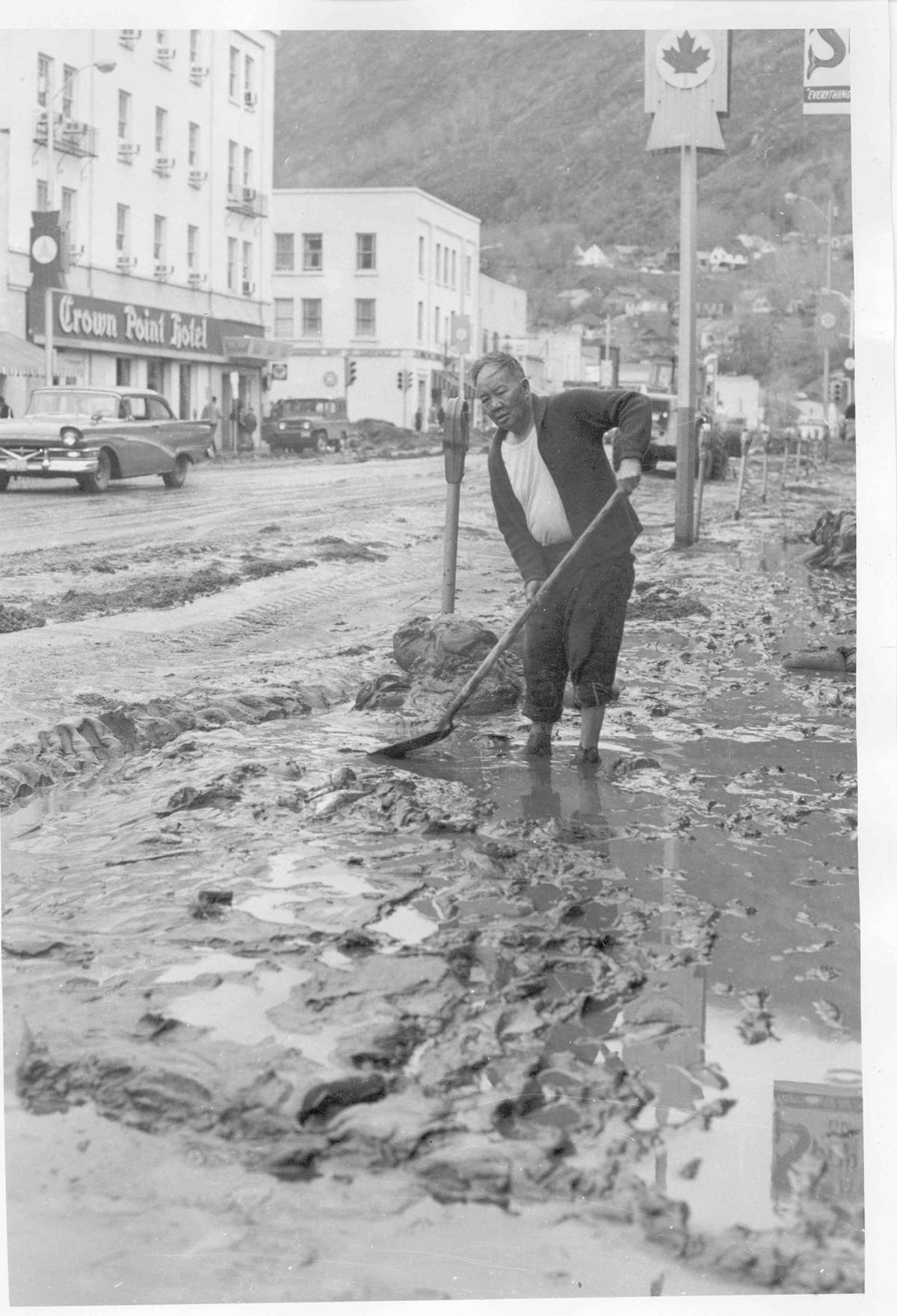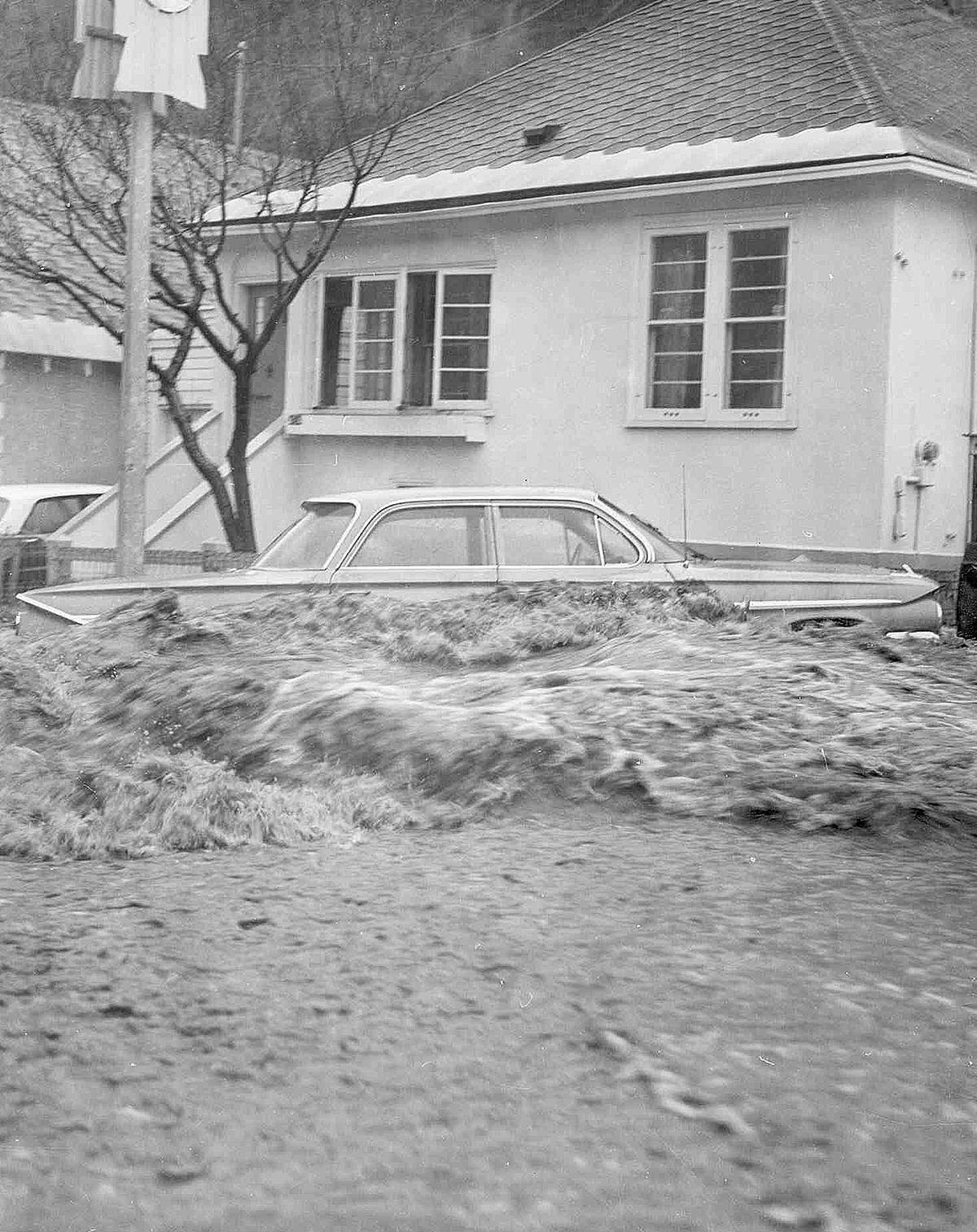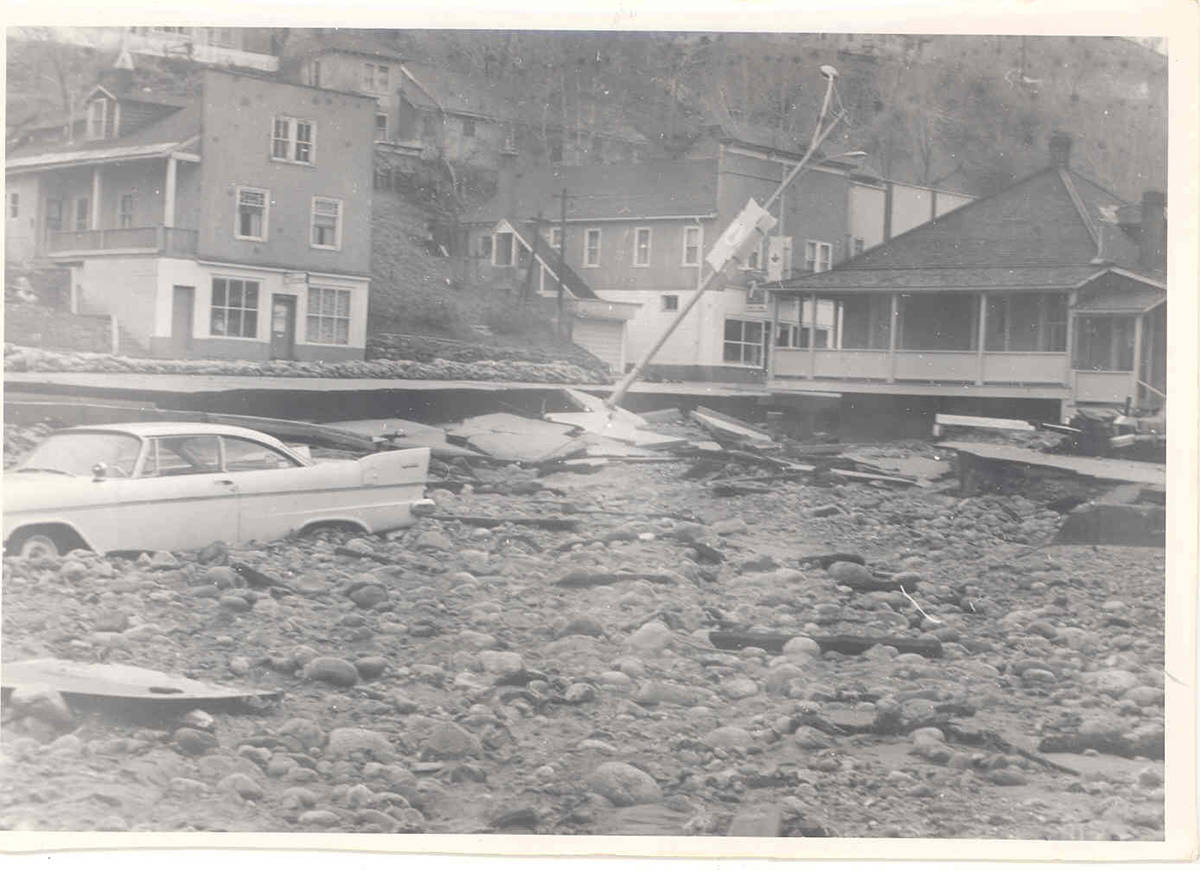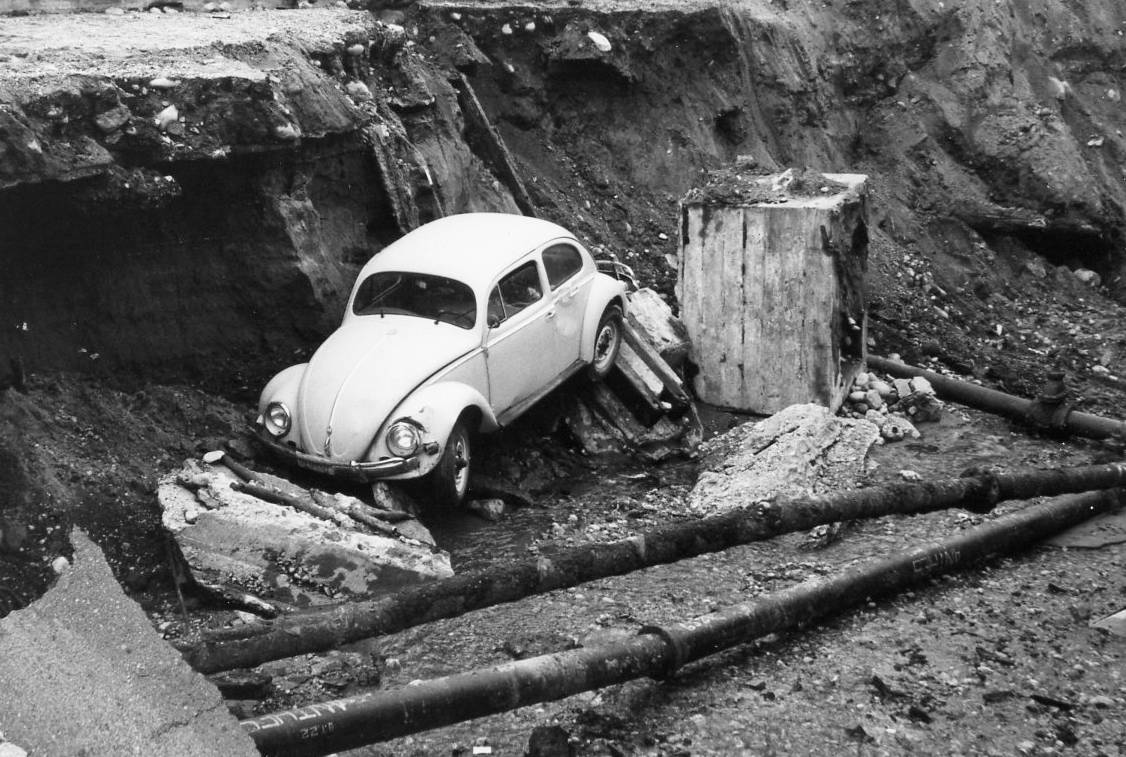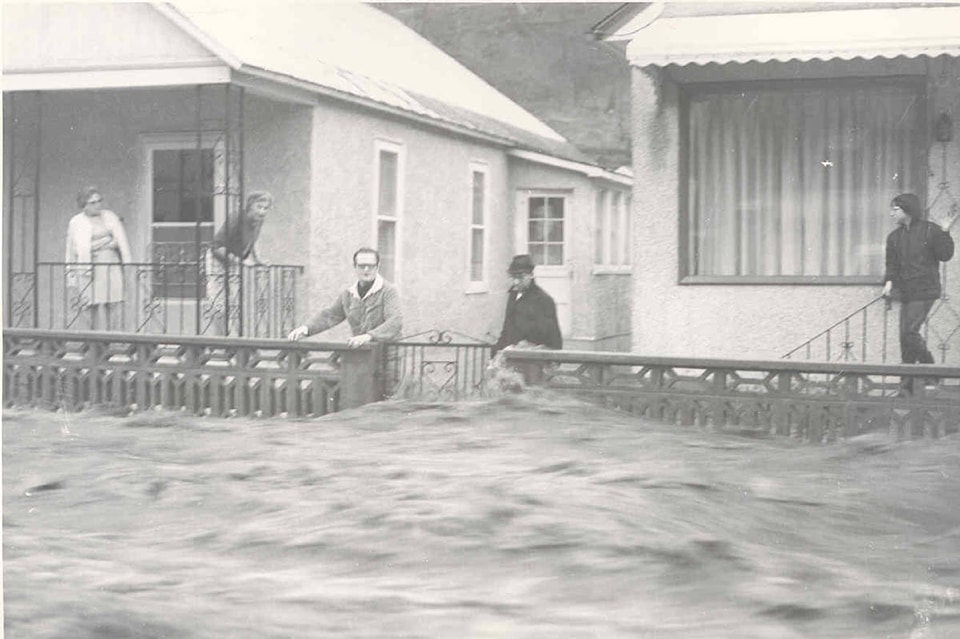“Who sent the water?” “Hard hit by nature’s fury” and “One amazed citizen,” describe just a few of the photos printed under the screaming headline, “Trail Stricken By Flood,” in the April 24, 1969 edition of the Trail Daily Times (see Page 3 in our Tuesday edition for a full rendition).
The previous day, April 23, the city was hit by catastrophic flooding that damaged or destroyed hundreds homes and businesses from Rossland Avenue through to the far end of town. Marking 50 years since that unforgettable day, the Trail Times chose to talk with three people who were in the thick of it - a Trail councillor, a baker and a young grocery store clerk. Here, in their words, is how the day unfolded.
“It was raining like crazy all that afternoon, just pouring down. I left work early because I was worried, I was afraid for the Trail Creek inlet.”
Norm Gabana was a Trail councillor on April 23, 1969, the day of historic flooding in the city. In fact, Norm oversaw the municipal works department back then as part of his elected position. That’s why he left his day job at then-Cominco that Wednesday afternoon, and headed straight to ground zero - the belly of the beast in the west end of the Trail Gulch.
“I was at the inlet when a section of the Department of Highway’s culvert came roaring down the creek,” Norm recalled. “I was right there with a backhoe, the operator was cleaning out the grillage because there was torrents of water (and debris) already.”
The broken piece of culvert blocked the mouth of the trash rack, forcing the fast-moving water up and over the inlet toward Rossland Avenue.
Of note, is that 1969 still holds the record for the greatest snowfall in the West Kootenay, and the first few months began with unusually heavy snow. So, in addition to the relentless rain that Norm remembers, spring run-off was torrential that year.
“When it overflowed over the top, there was not a thing we could do,” Norm said. “The operator was reluctant to put the bucket in (to remove the piece of culvert) he says, ‘Norm, it’s going to tip the machine over and I’m going to be trapped in it. So we had to stay there and watch it overflow.”
Stay there they did, perhaps in momentary shock, but not for long - there were people to warn downstream.
Remember, those were the days of rotary phones, and party lines, and not everyone had a telephone.
So emergency communications had to be accomplished the old-fashioned way, by knocking on doors and giving neighbours a face-to-face heads-up.
“We ran down Rossland Avenue getting people out of their houses,” Norm reminisced. “Telling people to move their cars and get themselves out and to high ground because we didn’t know how long this was going to go on for.”
As people fled and cars floated down the Gulch and through the streets of downtown Trail, the city had to brainstorm how to drain the water.
That’s because the Esplanade river wall was built to keep water from the mighty Columbia River out of Trail, not the other way around. So it acted like the wall of a pool in a way, by retaining the flood water in town.
Norm recalls the city getting hold of a gentleman named Charlie Bloomfield, a Cominco worker who had a blasting licence.
“So they were going to try to blow the top of the wall off to let the water out,” Norm said. “That blast rattled windows in East Trail, maybe even farther, because that wall was so sternly built. If you go there today you can still see the repairs to the wall.”
Overnight the water drained into the Columbia River and the creek somewhat settled, so the chunk of culvert was removed the following day.
“Once we pulled that out, all the water went down, and poof it was gone,” he said.
The hardest hit Gulch properties were located on the Cominco-side of the highway, from the former St. Anthony’s Church to Byers Lane, the latter of which is now a chain-up area vacant of family homes.
Thinking about the aftermath stirred up many memories for Norm as he recalled how industry, government and community bonded to recover and re-build.
“Cominco sent their loaders and trucks down so we could start hauling (mud) off the streets,” he said. “And the province wrote us a $500,000 cheque, they said to spend it on whatever is needed, show us what you are spending it on, and anything left, we will take it back.”
A flood committee was soon established to make decisions on things like buying out houses and/or paying for water damage.
“I don’t think there was one individual who could say they needed help and didn’t get it,” Norm said. “They got what they needed financially, no questions asked.”
Months later when all was said and done, the city’s mayor, Buddy DeVito, kept his word to the province, showing why he remains one of the most respected politicians in Trail history.
“Buddy’s integrity was incredible, when it came to structure business there was no mayor in this town that could match his skills,” Norm shared. “We had $100,000 left over, or something close to that, so we passed the motion in council to return the money to the provincial government,” he added. “Just like Buddy promised he would, even though some people didn’t want us to do that.”
“All of a sudden I heard whoosh. Immediately the level of the water in the basement was rising and I knew I had to get out. We had a railing down there and I was able to pull myself up. I sometimes think if that banister wasn’t there, I may not have made it out. I don’t know if it was luck or what that day.”
Rino Merlo was putting away some freight in the basement of City Bakery that Wednesday afternoon when water started gushing in. After he escaped the bottom floor of his family’s Cedar Avenue store by pulling himself up the stairs with the railing, he had to kick out a window to get his counter ladies Rina Tavaroli and Fanny Bunne to safety.
“We couldn’t get the doors open, there was so much mud,” Rino recalled. “I just remember lifting them through the opening, and by then there was at least two and a half feet of water, and rising.”
All three did get safely to higher ground. Rino’s parents, however, didn’t have time to flee. They spent the night stranded in their apartment which was on the top floor of the bakery.
“Besides a Volkswagen floating by the Trail Times, there are a few other things I remember,” he shared. “Star Bakery saw the water coming down Rossland Avenue and later on told me (they) got busy by stuffing plastic bags under the door. They kept most of the water out, there was very little damage.”
He also recalled the story of how a downtown Trail hardware store came up with a unique way to hold off the water.
Back then, a building supply business owned by the Konkin family was located on Eldorado Street close to the river wall.
“When they saw the water coming they barricaded all the doors with sacks of cement,” Rino said. “So when the water hit the cement, it set and created a wall. So the only thing Konkin’s lost was the cement they used to barricade the doorways.”
Rino’s lasting memory of 50 years ago, however, is all the back-breaking clean up that followed.
“It was work, work, work,” he said.
“When I walked up Rossland Avenue to see what was happening to our building, all I remember was one of those round sewer plates was about eight feet in the air because the water was spouting up so hard from the manhole it pushed the cover up that high. And I just remember all the mud and all the trucks downtown, it was a disaster.”
Fred Romano was a student at Selkirk College in 1969. After class, he worked at Ferraro Foods - called SuperValu back then - as he did that day. Fred also helped his mom run the family’s Rossland Avenue pool hall, called ‘U & I Billiards.’
“SuperValu was very busy that day,” he began. “I think it was Cominco’s payday and everyone came just to shop. We were out front working by the tills … behind us there was 200 or 300 bags of Robin Hood flour because it was a special, and everyone bought one for probably 99 cents back then.”
Staff was occupied with their job of ringing shoppers through and bagging groceries, so the afternoon began like any other. But then the store owner came in looking quizzical.
“I remember when, all of a sudden, Jimmy Ferraro comes in kind of laughing and saying, ‘there’s water coming down Rossland Avenue,” Fred recalled, “And everybody said, what?”
Before anyone could figure out the gravity of what was happening, water starting flowing into the store.
“So we took the Robin Hood flour and tried to use it for sandbags,” Fred said. “The basement, where all the inventory was kept, flooded and water filled up the store. We were probably walking in a good foot or two upstairs and the downstairs was full.”
Fred doesn’t recall the exact time he left to check on his family’s Rossland Avenue business. All he remembers is the sheer force of water pushing up through the ground in the Gulch, and the catastrophic aftermath.
While he briefly reminisced about getting the pool hall back up and running, which took months, there is one memory that stands of most of all.
Many of the people forced so suddenly from their homes were temporarily sheltered in the Trail United Church.
“I can tell you one thing,” Fred shared. “Jimmy and Esther Ferraro said to us, ‘Go over to that church and see what they need. You come back here and take anything you want off these shelves and bring it over to them. So I don’t remember a lot from that time, but that is something I will never forget.”
newsroom@trailtimes.ca
Like us on Facebook and follow us on Twitter
